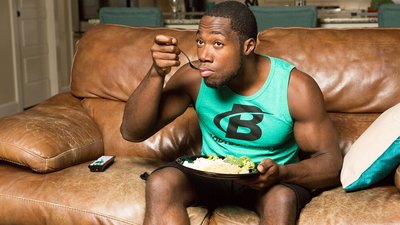It's no secret that hunger hits hard when you're dieting. And the longer you diet, the louder your stomach growls. Drinking enough fluids and increasing the protein and high-fiber carbs you eat can help. You can also calm that hungry beast in your belly by making the following foods a regular part of your menu—even when you're dieting.
1. Olive Oil
Maybe you know that olive oil is rich in heart-healthy omega-3 fatty acids. But did you know that it's also rich in an omega-9 fatty acid known as oleic acid? This single nutrient can provide some serious appetite-crushing benefits.
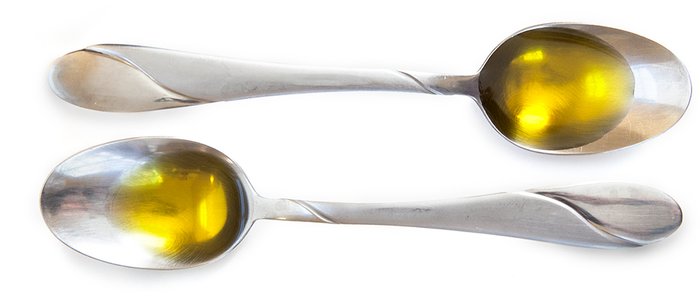
When oleic acid enters the small intestine, it's converted into a fat-based hormone known as oleoylethanolamide (OEA). OEA finds its way to nerve endings in the brain where, according to preliminary research done with rats, it helps curb the hunger signals your brain sends to your body. The olive oil itself enhances OEA's ability to curb the appetite by making it more readily available to the brain.[1]
Drizzle olive oil on your favorite protein, use it in your salads, and cook your meat, vegetables, and eggs in it to help keep your cravings in check.
2. Whey Protein
Whey protein packs a powerful appetite-suppressing punch because it contains lots of leucine and bioactive compounds, both of which also help suppress the brain's hunger signals.
Whey protein contains the highest percentage of leucine of any protein.[2] Preliminary research on rats suggests that leucine plays a major role in suppressing appetite by signaling "fuel availability" to the brain's appetite center, the hypothalamus. This signal reduces the hunger cues the brain send throughout the body.[3]
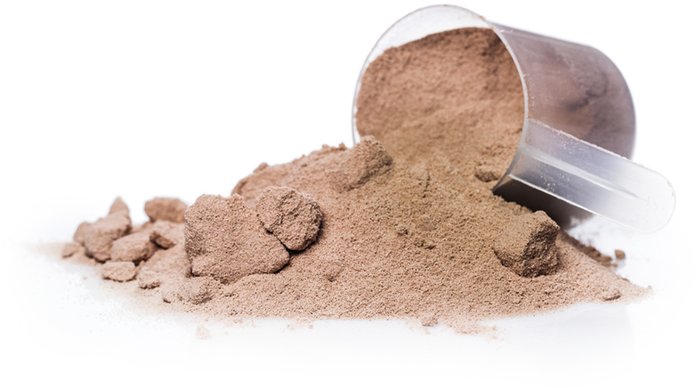
The bioactive compound glycomacroprotein (GMP) can reduce cravings by affecting the release of the gut hormone cholecystokinin (CCK).[4] CCK helps suppress appetite by sending signals to the hypothalamus that cause it to issue a "cease-eating" order to the rest of the body.[5]
Try a whey protein shake for a mid-morning snack, or put some whey protein in your dessert tomorrow night. Who knew there were so many easy ways to outsmart hunger?
3. Rye Bread
Next up is the whole-grain rye. One of the great things about whole grains is that they slow digestion and promote a feeling of fullness. With their complex structure and high fiber content, these grains take a long time to break down.
As it turns out, rye can fight hunger even better than other whole grains. Rye is rich in noncellulose polysaccharides, molecules that love to bind with water. In layman's terms, that means that when you eat rye bread, your body absorbs more water, which fills more space in your stomach, making you feel full![6,7]
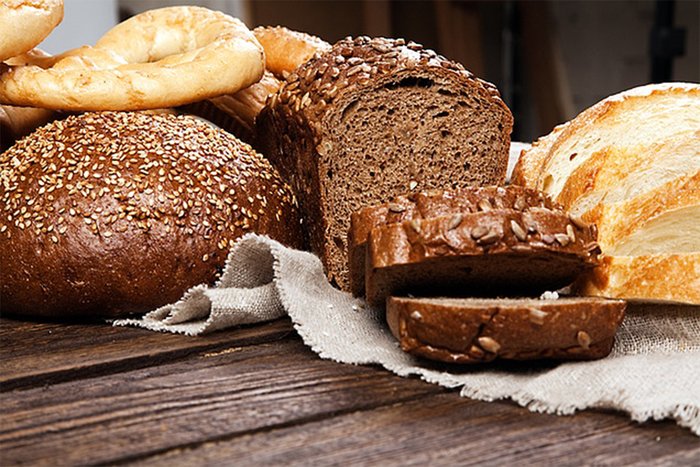
Rye can suppress hunger in yet another way. When you consume any carbohydrate, your blood sugar levels increase as the carbs are broken down. This results in an increase in insulin levels. Rye has been shown to trigger a lower insulin response than wheat, which may decrease hunger signals.[8]
Next time, try switching from wheat bread to rye bread, a simple substitution that can help you feel full.
4. Meat
Meat is on the list of appetite suppressers because protein digests slowly. But compared to plant sources of protein, animal sources may also help your body produce more CCK (the hormone I talked about under whey protein), which further suppresses your appetite. This is related to the phenylalanine content of animal proteins. Phenylalanine is an essential amino acid and potent CCK releaser.[9] Phenylalanine can be found in greater concentrations in animal sources of protein compared to plant proteins.
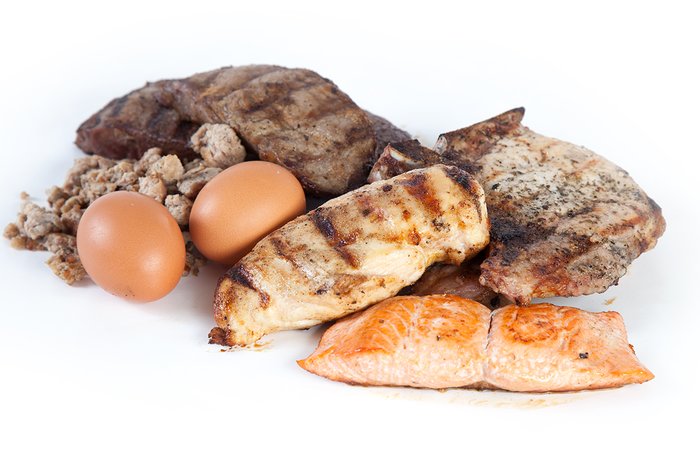
Animal protein makes a great staple food not only for its nutritional value, but because it helps you feel fuller longer. If you follow a vegetarian diet, look to soy, almonds, beans, sunflower seeds, eggs, and dairy to boost CCK production. Each contains a noteworthy amount of phenylalanine.
5. Artificial Sweeteners
More studies need to be done on the nutritional value of artificial sweeteners. Preliminary research, however, does suggest that some forms may have a positive impact on appetite suppression.
Grocery-store shelves are filled with "diet foods" like soft drinks, ice cream, puddings, desserts, or fillings that use the artificial sweetener aspartame to add sweetness without adding calories. If you're craving something sweet during your diet, choose one of these low-fat alternatives and see how they work for you.
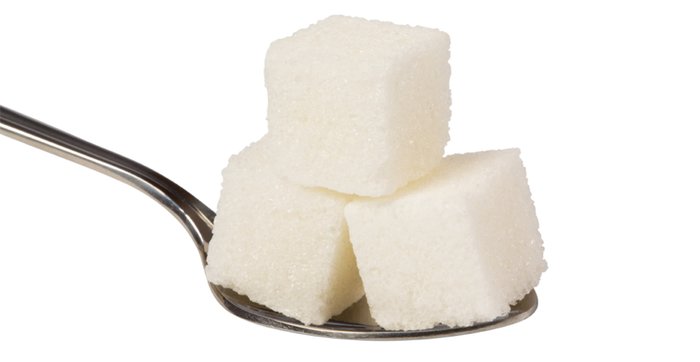
Practical Recommendations
Dieting is all about putting together meal plans that help you reach your goal. But those plans can be flexible—as long as you're careful. The simple additions and substitutions outlined above can help you stick to your diet without feeling quite so hungry. Give them a try!
References
- Schwartz, G. J., Fu, J., Astarita, G., Li, X., Gaetani, S., Campolongo, P., ... & Piomelli, D. (2008). The lipid messenger OEA links dietary fat intake to satiety. Cell Metabolism, 8(4), 281-288.
- Norton, L.E., Layman, D.K., Bunpo, P., Anthony, T.G., Brana, D.V. & Garlick, P.J. (2009). The leucine content of a complete meal directs peak activation but not duration of skeletal muscle protein synthesis and Mammalian target of rapamycin signaling in rats. Journal of Nutrition, 139(6), 1103-1109.
- Cota, D., Proulx, K., Smith, K. A. B., Kozma, S. C., Thomas, G., Woods, S. C., & Seeley, R. J. (2006). Hypothalamic mTOR signaling regulates food intake. Science, 312(5775), 927-930.
- Burton-Freeman, B. M. (2008). Glycomacropeptide (GMP) is not critical to whey-induced satiety, but may have a unique role in energy intake regulation through cholecystokinin (CCK). Physiology & Behavior, 93(1), 379-387.
- Veldhorst, M. A., Nieuwenhuizen, A. G., Hochstenbach-Waelen, A., Westerterp, K. R., Engelen, M. P., Brummer, R. J. M., ... & Westerterp-Plantenga, M. S. (2009). Effects of complete whey-protein breakfasts versus whey without GMP-breakfasts on energy intake and satiety. Appetite, 52(2), 388-395.
- Isaksson, H., Fredriksson, H., Andersson, R., Olsson, J., & Åman, P. (2009). Effect of rye bread breakfasts on subjective hunger and satiety: a randomized controlled trial. Nutrition Journal, 8(1), 1.
- Isaksson, H., Sundberg, B., Åman, P., Fredriksson, H., & Olsson, J. (2008). Whole grain rye porridge breakfast improves satiety compared to refined wheat bread breakfast. Food & Nutrition Research, 52.
- Leinonen, K., Liukkonen, K., Poutanen, K., Uusitupa, M., & Mykkänen, H. (1999). Rye bread decreases postprandial insulin response but does not alter glucose response in healthy Finnish subjects. European Journal of Clinical Nutrition, 53(4), 262-267.
- Ballinger, A. B., & Clark, M. L. (1994). L-phenylalanine releases cholecystokinin (CCK) and is associated with reduced food intake in humans: evidence for a physiological role of CCK in control of eating. Metabolism, 43(6), 735-738.
- Porikos, K. P., Booth, G., & Van Itallie, T. B. (1977). Effect of covert nutritive dilution on the spontaneous food intake of obese individuals: a pilot study. The American Journal of Clinical Nutrition, 30(10), 1638-1644.
- Rolls, B. J., Hetherington, M., & Laster, L. J. (1988). Comparison of the effects of aspartame and sucrose on appetite and food intake. Appetite, 11, 62-67.
- Rogers, P. J., Pleming, H. C., & Blundell, J. E. (1990). Aspartame ingested without tasting inhibits hunger and food intake. Physiology & Behavior, 47(6), 1239-1243.
- Rolls, B. J., Kim, S., & Fedoroff, I. C. (1990). Effects of drinks sweetened with sucrose or aspartame on hunger, thirst and food intake in men. Physiology & Behavior, 48(1), 19-26.

